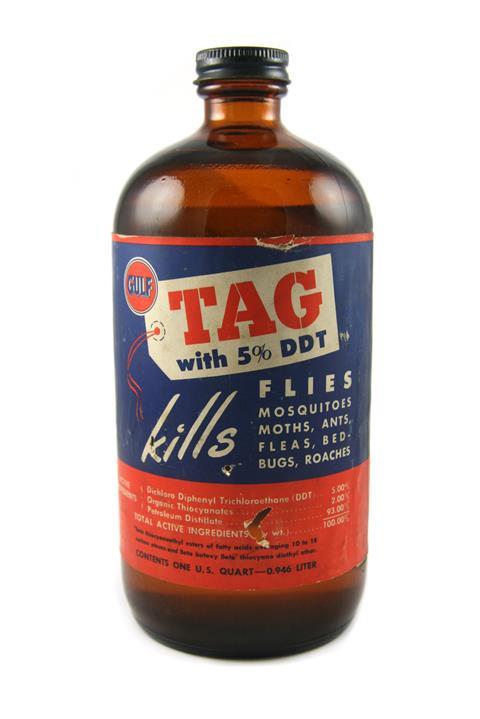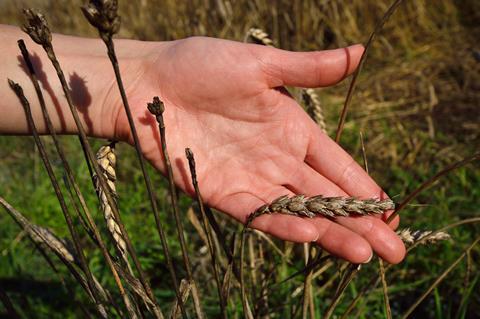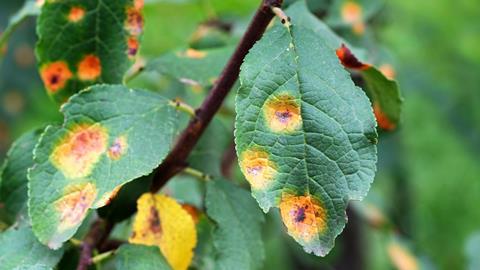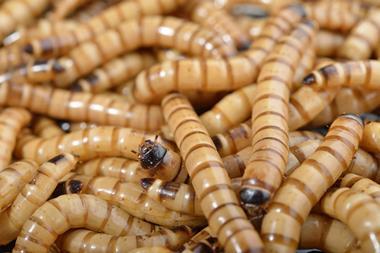Weeds and other plant pests can no longer be controlled by chemicals as easily as they could. Bárbara Pinho talks to the scientists finding solutions
Fleming first called it ‘mould juice ‘. Returning from vacation, the Scottish bacteriologist saw peculiar blobs of mould in his Petri dishes ofStaphylococcus. There were no bacteria around these spots; it appeared as if ‘mould juice’ had cleared the way. It did, and it got a sophisticated name afterwards – penicillin, the first antibiotic. Penicillin was mass-produced in 1941, yet nature fought back soon after. In 1942, penicillin-resistant Staphylococcus aureus was discovered. Today, rapid bacterial evolution and cross-resistance to multiple antibiotics raise fears of a world where antibiotics no longer work. Multiple public campaigns and initiatives have taken conversations of antibiotic resistance everywhere. However, another resistance-based threat is lurking right under our noses, literally on our plates: pesticide resistance.
In 1878, French winemakers were losing grapes to two pests: insects and gluttony. While Phylloxera bugs, yellow sucking insects, fed on grapevines’ roots, people passing by vineyards would feed on the grapes that grew next to roads. The easy to reach snack reduced production and worried farmers. To trick these travellers, vineyard owners mixed lime milk and copper sulfate and sprinkled this mixture over grapes, colouring the vines blue and giving grapes a rotten appearance. This discouraged theft from travellers and inspired Pierre-Marie-Alexis Millardet, a chemistry professor at Bordeaux University, to make thefirst fungicide. Walking by Bordeaux’s vineyards, Millardet noticed that vines close to the road weren’t as affected by the downy mildew fungus as the remaining ones. When he heard about the lime mixture, he figured it could deter the fungus, and he was right. Using the same ingredients, he made the ‘Bordeaux mixture’, a fungicide winemakers have used for decades. Today, farmers still use this DIY fungicide to attack pests, albeit under tight regulations. But before this successful episode, humans’ history of using chemistry to fight pests and weeds dates back to even earlier times.
A long history

‘The earliest was possibly in 400BC when flower heads of Chrysanthemum cineraria folium were apparently used in stores,’ says Graham Matthews, professor at Imperial College London in the UK and author of the book A History of Pesticides. Once dried, the flowers produce pyrethrum, a natural insecticide effective against bugs such as houseflies. Matthews mentions other natural insecticides in his book: from vinegar and cow urine to prevent canker in trees to water boiled with rue plants to kill Spanish flies. Growers used plants and solvents differently and often creatively, all with the one common goal of growing more food. ‘There’s no doubt that farmers wanted to get higher yields,’ Matthews says. ‘Particularly in cotton, where I was working, yields were generally not much more than 500kg per hectare. But with insecticides, even under reasonable rainfall, we would get 1500 to 1600kg. With irrigation, it was going up to 3000kg per hectare.’ If chemicals were available, farmers would use them, which raised some concerns when pesticides shifted from relatively innocuous botany into hazardous chemistry. ‘DDT was the one that really changed the situation dramatically,’ he adds.
Dichlorodiphenyltrichloroethane, or DDT for short, was the first modern synthetic insecticide. But while it became vital in agriculture, the initial intentions were to fight off insect-borne diseases, like malaria. ‘It’s difficult to visualise these days, but more soldiers died from malaria in wars in tropical areas than from wars themselves,’ Matthews says. DDT was highly successful in controlling mosquitoes and the subsequent diseases brought by them. Given its worth, its creator Paul Müller received the Nobel prize in medicine in 1948. DDT was created in Switzerland, and its production quickly spread, mostly because of its effective use in war zones. It further stimulated more industries to discover new chemicals, as Matthews describes. ‘After world war two chemists produced a range of new pesticides, which with the “green revolution” enabled farmers to grow key crops with new varieties that could be protected from pest attacks, thus avoiding famines.’ Of course, DDT’s downsides – including its disastrous effect on many bird species – led to it being banned in the US in the 1970s, with other countries following. But pesticide research kept moving forward, and in the 1970s, the bestselling herbicide was introduced – glyphosate.
Glyphosate, also known by its commercial name Roundup,disrupts a complex metabolic pathway in weeds, inhibiting crucial growth proteins and killing a broad spectrum of invasive plants. Ever since its discovery, glyphosate has been used worldwide in applications from farming to sports facilities, public parks and railway lines. It’s one of the most studied agrochemicals ever, and farmers still rely on it today. However, with such global reliance on glyphosate, the first signs of resistance started to appear. In 1996, two decades after its invention, glyphosate was no longer killing Lolium rigidum, a type of grass. This incident echoed what had happened with DDT 50 years earlier when researchers first recorded houseflies that had resisted the pesticide. The same kept happening with other pesticides: sooner or later, pests evolved resistance. Innovative chemistry had changed agriculture, but pesticide resistance was changing too.
The rise of resistance
‘Resistance is leading to this problem where the control measures that we have relied on for decades are no longer working,’ explains Dana MacGregor, a plant molecular geneticist at Rothamsted Research in Hertfordshire, UK. ‘Farmers would go out into the field, they would spray the crop, and they would end up with just the crop, it was that easy. Now, the traditional measures of just going out and using something out of a can don’t work. Much more effort has to go in on the farmer side of things to achieve those really high levels of healthy crops and high yields’.

Weeds are adaptable organisms and develop resistance against herbicides over time, due to both genetic and metabolic adaptations. There are two main types of resistance: specific resistance and general resistance. In specific resistance, weeds resist herbicides via genetic mutations. Some kinds of herbicide kill weeds by binding to a particular position in the invasive plant’s DNA. However, through mutations, weed DNA changes, interfering with how the herbicide works. If a herbicide can no longer bind to a weed’s DNA, it stops being effective and the weed becomes resistant. General resistance is more complicated. Weeds resist herbicides via multiple processes, potentially including both metabolic and genetic aspects. As a result, the more farmers use the same herbicide to kill weeds, the more likely weeds are to evolve and resist. This increasing resistance to chemicals endangers various types of crops, and in the UK, wheat crops are at risk.
The UK is one of the top producers of wheat in Europe. A recent report shows that resistant black-grass (Alopecurus myosuroide s), a single weed, reduces this cereal crop’s yield by up to 800,000 tons, representing a cost of £380 million per year in lost income to farmers. ‘That’s 1.6 billion loaves of bread. These are big numbers. I’m not really a farm person, I’m not an agronomist, but I understand what 1.6 billion loaves of bread looks like. And this is with just one resistant weed in one country’, MacGregor adds.
Genetic solutions
MacGregor’s work focuses on understanding herbicide resistance by looking at weeds’ genomes. She compares resistant weeds to a broken car. To fix the problem, one must understand what’s doing the damage in the first place. But while mechanics can open a car and see what faulty components are stopping the car from working, plant scientists are less familiar with what makes a plant resist pesticides. ‘When we look at a plant, we see green bits and flowering bits. But what is exactly inside of those? What are the genetics underpinning the [resistance] traits that we see?’ MacGregor compares at the molecular level plants that are killed by herbicide to plants that resist that same herbicide. With this information, she might understand what makes a weed resistant – and what strategies would be more feasible to deal with it. MacGregor isn’t directly working to create new herbicides, but she collaborates with chemical companies which will do so with the information she gathers through weed research.
Another research group in Germany is trying to bring herbicides with novel modes of action to the market. At Targenomix, scientists are identifying the mode of action of chemicals with a herbicidal effect. Sabine Kahlau, scientific coordinator of herbicide research at the company, explained that she and her colleagues receive chemicals with herbicidal activity from their customer companies, like Bayer. They then identify the molecular targets of these small molecules. Some of these molecules are still at the early stages of research pipelines, while others are already available on the market. This is the case of aclonifen.
You lose many compounds on the way to an actual market product
Aclonifen is a herbicide that has been used since the mid-1960s. It inhibits pigment synthesis, disrupting chlorophyll and bleaching weeds like Alopecurus sp. Up until last year, the target of this herbicide was unknown. Industries produced it, and farmers used it, but no one knew what it was targeting within the plant. Kahlau and her colleagues finally identified solanesyl diphosphate synthase (SPS), an enzyme, to be aclonifen’s target – a finding that showed for the first time ever that SPS could be a herbicidal target, she adds. Even though resistance to aclonifen isn’t an alarming issue (onlysix species of weeds are resistant to it so far), this discovery serves to show the potential of studying proteins inside plants and looking at them as potential herbicidal targets.
‘Plants have 20,000 to 30,000 different proteins encoded by their genome. Not all of them are targets for herbicides because the plant can give away some of them without really suffering too much. But many of them are targets,’ Lothar Willmitzer says. Willmitzer, research director at Targenomix, explains that currently commercialised herbicides only target around 100 proteins in plants out of the thousands available. To overcome herbicide resistance, he says that identifying proteins that present new targets for herbicides is a must.
But even after discovering new pathways and modes of action, taking a herbicide from bench to crop might take longer than desired for multiple reasons. From toxicology to environmental effects, herbicides must comply with regulators’ strict criteria and must fulfil many parameters to reach crops. Willmitzer describes a loss of thousands of potential molecules that fail many criteria and Kahlau agrees. ‘You lose many compounds on the way to an actual market product,’ she says.
To Martin Clough, head of technology and digital integration at agrochemicals company Syngenta, the criteria list goes a long way. ‘It’s not just that we want to overcome resistance, it’s all the other things that we’ve got to find as well. [The new herbicide] has got to be effective, safe, have minimum environmental implications, can’t leave residues and so on. There are so many design parameters, of which resistance is an important one, but not the only one. It is literally like finding a needle in a haystack.’
At Syngenta, new products are still under testing – and have been for years. According to Clough, it takes about 10 years and $200 million (£140 million) to develop a new pesticide. Despite stringent guidelines, massive costs and slow-paced processes, R&D companies are keen on discovering new modes of action. However, when these new modes of action come to reality, won’t weeds develop resistance yet again?
Is resistance inevitable?
Research has concluded that resistance is potentially inevitable, and weeds develop resistance to any new product introduced in the market. And while it took some years for DDT-resistant houseflies to appear after its discovery, the current scenario is hurried: resistance varies between species and chemicals, but it can develop after as few as three years of consecutive use of a single product. So what’s the point of finding new chemicals?

Clough mentioned that with more modes of action in the market, farmers wouldn’t be obliged to use the same herbicides again and again – such repeated use is what selects for resistance in the first place. Besides, giving up on herbicides completely could solve resistance issues, yet start new ones. ‘If we rely on cultivation [traditional farming] strategies to control weeds, then we have other problems like destruction of soil structure, erosion and damage to microbiota in the soil, which can be detrimental for crops and the environment,’ he explains. ‘Where farming has shifted away from deep mechanical cultivation, the soil structure is in much better shape. If you go back to mechanical cultivation, you’ll also release more carbon dioxide, increasing greenhouse gas production.’
So the path to innovation can involve tradition. To fight pests, farmers can no longer rely exclusively on chemicals nor on traditional practice. This mission demands an interdisciplinary approach that combines chemical weed control with non-chemical methods. In an integrated pest management strategy, growers are expected to plan which herbicides to use, test weeds regularly, rotate chemicals and crops and practice tilling. New modes of action would be crucial additions to this plan. However, the difference from 50 years ago lies in how growers use these new modes of action. Kahlau is an advocate for clever use of herbicides to avoid resistance: applying them carefully, rotating action mechanisms, and applying appropriate doses. Clough agrees. ‘You can’t be complacent as a farmer. You’ve really got to use all the tools that you can possibly get your hands on. There are things you can do from an agronomic perspective which will sustainably keep the pressure of weeds down.’
As with antibiotics, there are no silver bullets to solve resistance problems. Tackling antibiotic resistance demands behavioural action and ongoing research while fighting herbicide resistance combines chemical and non-chemical strategies. As exhausting as these fights may be, the truth is that we are losing in an evolutionary race between weeds, bacteria and humans. Only innovation and research can give humankind the necessary tools to beat the bugs and weeds.
Bárbara Pinho is a science writer based in Porto, Portugal













No comments yet